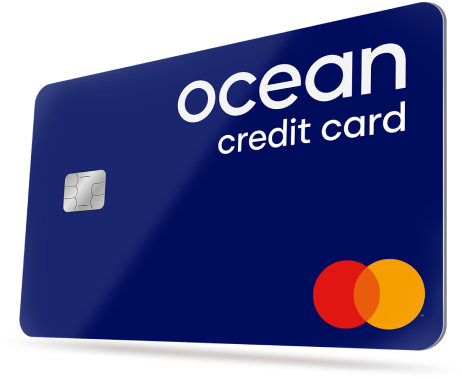Other criteria when applying for credit
As well as these three main ones, some credit card providers have their own requirements too. For example, some lenders could say they’re not suitable for people who’ve had a CCJ. In this case, if you have had a CCJ, you’d know not to apply as there’s a good chance you won’t be accepted.
Equally, if you know you have a bad credit history, you might want to focus your efforts on providers who specialise in offering credit to people with a poor or non-existent track record of managing money - because you’re more likely to get a ‘yes’ from them.
How to apply for a credit card
You can apply for a credit card online, over the phone, by post, or at a bank or building society. Nowadays, it’s safe to say online is the most popular option. Once you’ve decided where you’re going to apply, here are the next three steps to take:
1. Do your research
Don’t underestimate the importance of your research and make sure you dedicate enough time to it - if you don’t, you could miss out on some of the best deals.
When it comes to digging around you can either go to a lender directly or use comparison sites, but it’s probably best to do a bit of both. If you only go to lenders directly, realistically, you’ll forget a few, and it could be that in those few is the one for you.
Equally though, you could also miss out if you only use comparison sites, because not every credit card deal will be shown on all sites.
A key advantage of using comparison sites is that most offer an easy-to-view table of each credit card’s key information - like interest-free periods, interest rates, other charges, and credit limits.
2. Fill in the form accurately
Once you’ve found a provider that:
a) fulfils your requirements and
b) is likely to accept you, it’s time to fill in their form.
At some point during this process, you’ll be asked for your name, address, date of birth, nationality, employment status, and salary.
You may need to provide a couple of documents to prove:
- you are who you say you are - e.g. your passport
- you live where you say you live - e.g. a recent council tax or utility bill
3. Get an answer
After you’ve given the credit card provider all the information they need, they’ll be able to make a decision as to whether or not they want to accept your application - more often than not this happens instantly.
If you’re accepted, all that’s left to do is sign your credit agreement and wait for your card. If you’re rejected though, you might want to ask the credit card provider you applied to which credit reference agency they used. From this, you’ll be able to check what issue(s) on there could’ve led to you being turned down, and in turn, start to resolve them.
Beware of making multiple applications
Lots of people fall into the trap of being rejected for credit and then immediately applying with another lender. Reject. Apply. Reject. Apply. It’s a vicious circle that should be avoided at all costs.
Why? Because, to lenders, it can make you look desperate to access cash, and that’s not a trait they’re looking for in future borrowers. So, that act of repeatedly making unsuccessful applications could actually be doing more harm than good - and reduces your odds of being accepted for any type of credit down the line.
How to avoid repeat applications
As we touched on earlier, the research stage plays an important role in avoiding repeat applications. If you read up on the card you’re applying for to make sure it’s a good fit first - for both parties - you should hopefully be accepted first-time round, eliminating the need for numerous applications full stop.
Another complementary option is to make use of credit card eligibility checkers (if possible). With these, you can get a good idea of whether or not you’d be accepted before you actually apply, without it impacting your credit history.
How to rebuild your credit history
If you want to apply for a credit card but you know you’ve got a poor credit history, there are a few credit building steps you can take before you apply, to a) open yourself up to better deals, and b) increase your odds of being accepted.
1. using the main credit reference agencies (Experian, Equifax or TransUnion) make sure there aren’t any mistakes in your credit report. If you think there’s a false entry - like incorrect details or a wrong missed payment, these can be removed. To dispute an error, just get in touch with the credit reference agency in question and ask them to correct it. Either way, they have to get back to you within a month to let you know what they’re going to do
2. it’s also a good idea to see if you’re still “financially linked” to someone you shouldn’t be – such as an ex-partner or a previous university flatmate. For more tips, check out our guide to improving your credit score and give yourself a better chance of getting accepted in future
3. register on the electoral roll. This only takes a couple of minutes but can make a big difference as it allows lenders to quickly and easily verify you are who you say you are
4. if you have a history of missing or making late payments, now’s the time to hit that habit on the head. The more repayments you start making on time, the more ticks you’ll get in your credit report, and the more likely lenders are to see you as less of a risk.
5. and finally, if you’ve lots of outstanding debt hanging over your head - like an overdraft, loan, store card, or another credit card, do your best to try and reduce them as much as you can afford to.
Ocean Credit Card
See if it's a YES before you apply
- Up to £8,000 credit limit
- Checking won't affect your credit score
- Get a response in 60 seconds
39.9% APR
Representative (variable)
Intelligent Lending Ltd (credit broker). Capital One is the exclusive lender.

Disclaimer: We make every effort to ensure content is correct when published. Information on this website doesn't constitute financial advice, and we aren't responsible for the content of any external sites.




